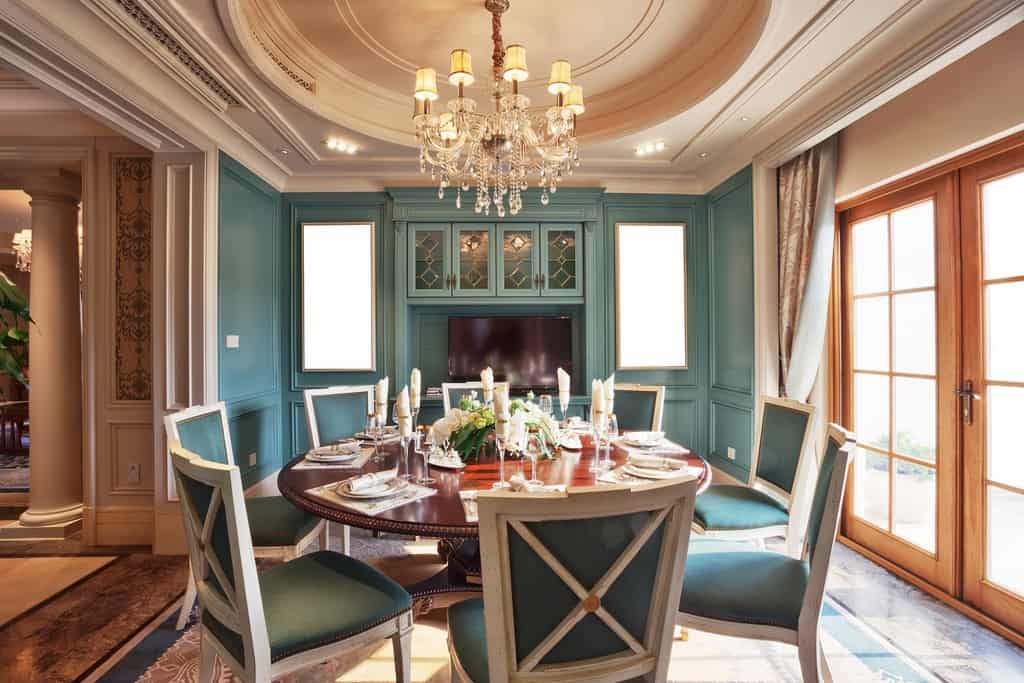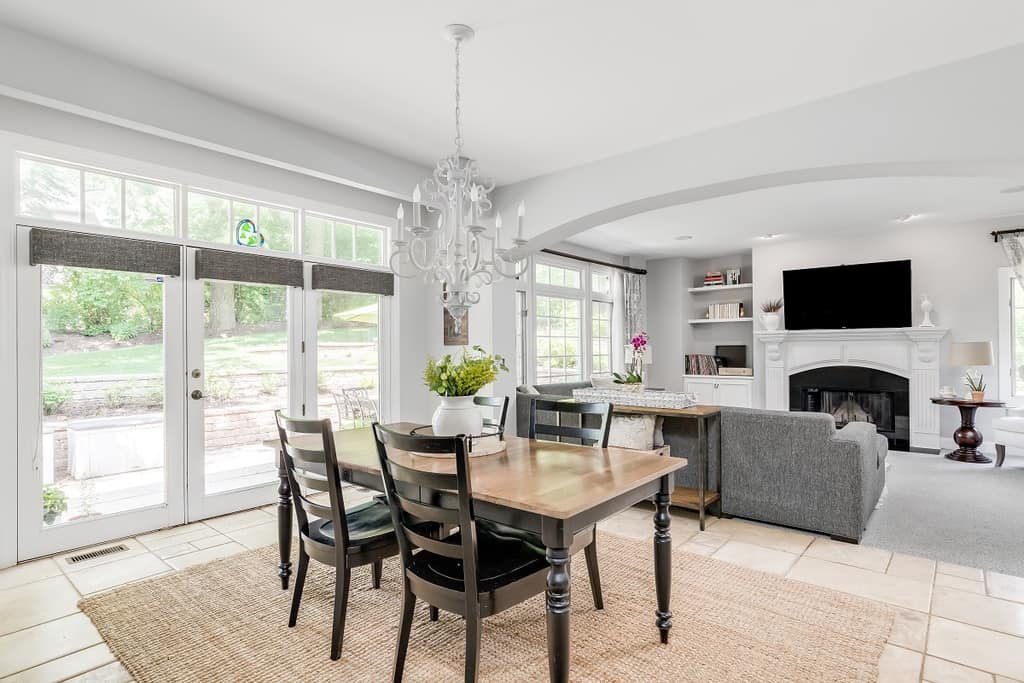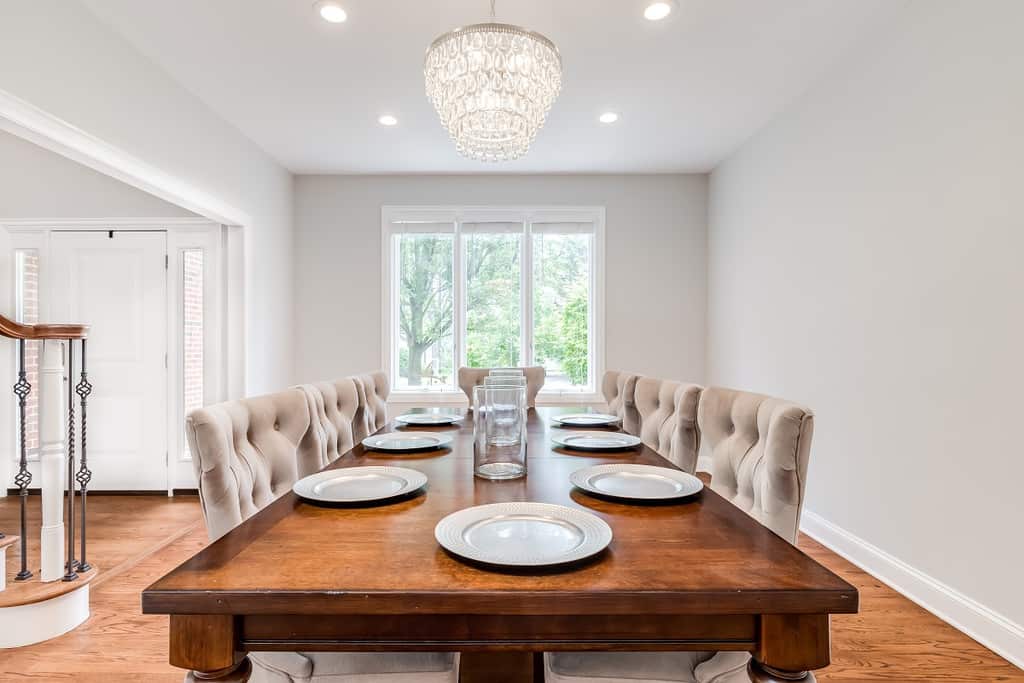
How High to Hang Chandelier Above a Dining Table?
Do you know your proportions? A well-designed room is all about scale and proportions. If you get them wrong, it doesn’t matter how elegant or beautiful your chandelier and furniture are; your dining room will always feel slightly uncomfortable and off. Hanging your chandelier at the right height sets the stage for the rest of the room. This large light fixture is typically the focal point in the room, so it needs to be at the right height to properly illuminate the space.
The Standard Chandelier Height Over a Dining Room Table

When hanging a chandelier over a dining room table, the standard advice is to measure from its lowest point to the table. It should be between 30 and 36 inches from the tabletop. However, this advice assumes that you have a standard ceiling height of eight feet. As a general rule, you should add three inches of hanging height for every additional foot of ceiling height.
While this advice is helpful, it doesn’t consider the rest of the room’s variables. These include your table size, room size, amount of light generated, and chandelier size.
How Far Should a Chandelier be From the Ceiling?
This is the wrong way to look at it. When hanging a chandelier over a table, the vital measurement is the one between the table and the chandelier. Ceiling height isn’t as important. You only need to factor in the height when your ceiling is over eight feet tall or your dining table is in a large room that’s part of an open floor plan.
Adjusting Chandelier Height For Room Size
If you approach hanging your chandelier with the idea that its sole purpose is to illuminate the table, you won’t worry about room size. However, this is a narrow way of thinking. Yes, a chandelier is a fixture that’s meant for illumination. However, it is also a design feature for the space. Therefore, you may need to adjust the height of the chandelier up or down to make it fit better into the space.
View your chandelier from these three angles once you think you have found the perfect height.
- Seated at the dining table.
- When entering the dining room.
- When seated elsewhere in the room.
Large rooms that are a part of an open floor plan benefit from the third viewing point. The chandelier over the table needs to make sense when viewing it from elsewhere in the room. This could mean hanging it higher or lower than you usually would.
Adjust For the Size of the Chandelier

A large or elaborate chandelier will take up a lot of visual space in your dining area. Because of this, you may want to hang it higher. This brings the visual weight, helping to reduce the heaviness felt directly over the table. The added height can also make it easier to admire the chandelier and make the whole room feel more balanced.
Adjust For the Size of the Table
Start by picking a chandelier that is the right size for your dining table. It should be one foot smaller than the diameter of the table. To know this, measure the width of your table and subtract 12 inches. This is the maximum width of your chandelier. To determine the maximum length, measure the length of your table. Your chandelier should be one half to two-thirds the table’s length. If your chosen chandelier is on the large side, hang it higher. This will prevent people from bumping into it and help to visually reduce the chandelier’s size.
Adjust For the Amount of Light
Your chandelier needs to give off enough light that you can easily enjoy a meal at your dining table without straining your eyes. However, you don’t want it to be so bright that you hurt your eyes. Once you install your chandelier, turn it on and see for yourself the amount of light it produces. You can then adjust the height based on your needs. If the light is overly bright, hang the chandelier higher to help diffuse the light. If your chosen chandelier doesn’t produce very much light, hang it low to maximize the amount of light produced.
Because a chandelier is an overhead light, it has the potential to create unflattering shadows on people’s faces when sitting at the table. You’ll need to sit at the table and see how the light hits people’s faces to prevent this. You may find raising the light a couple of inches can fix this.
Chandelier Positioning

No matter what height you choose for your chandelier, it needs to be correctly positioned over the table. It should always be placed in the center of the table. Now, it’s easier to move the table than the light fixture. However, you will want a smaller chandelier to make it easier to center the table under the light in a smaller room.
Keep in mind that this could result in your dining table not being in the center of the room. That’s ok. It’s more important to get the light centered over the table than to have the table in the center of the room.
What Happens When a Chandelier Is Too Low?
The biggest problem with a too low chandelier is that people bump their heads into it. Additionally, the light can be too bright and harsh on the eyes. Depending on the type of bulbs in your chandelier, it can also generate a lot of heat, making it uncomfortable to sit under.
What Happens When a Chandelier Is Too High?
A chandelier that is too high will feel disconnected from the table and the room. This creates a disjointed design. The chandelier will look as if it’s just randomly floating in the air. You may also find that your table doesn’t have enough light because it diffuses too much before it reaches the table.
Should Table Decor Affect Height?

Because table decor changes, you shouldn’t hang your chandelier based solely on this one factor. However, if you like tall table decor, you’ll want to hang your chandelier closer to the 36 inch measurement. This will give you more space for the decor underneath it. On the other hand, if you hang your chandelier at the 30 inch measurement, you’ll find that the tall table decor looks cramped under the low hung light fixture.
Related read: 58 Dining Table Centerpiece Ideas
What If The Ceiling Is Slanted?
Chandeliers are not a universal light fixture. If you have a slanted ceiling, you’ll need to buy a compatible chandelier. The base on these fixtures can move to account for the ceiling angle. This helps the chandelier to hang straight down vertically despite the uneven hanging base of the ceiling.
